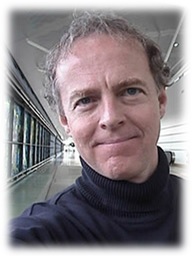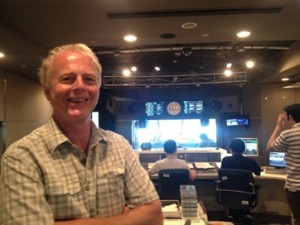Our new initiative to highlight innovations and innovators in and around the radio business debuts today on what will be the first of many “Innovation Fridays. Our first choice was a no-brainer. Kurt Hanson is synonymous with innovation in our industry. He’s been inventing and reinventing for years, and we’re pleased to honor him in our “Radio’s Most Innovative” effort. Please send us your ideas for future honorees to [email protected].
Mike Stern wrote this piece and will be a regular contributor on “Innovation Fridays.” Congratulations, Kurt, and as you’ve reminded us at several RAIN Summits, “Things are moving faster than we think.” – FJ
In 1999, cellphones didn’t have cameras, texting was brand new, and the first iPods were two years away. Yet, while the world was concerned about Y2K, Kurt Hanson launched RAIN: Radio And Internet Newsletter — the first publication devoted to the world of streaming audio. Then, to further illustrate his commitment to this new space, the following summer he began building AccuRadio, a multi-channel online music streaming service that now reaches nearly a million unique listeners monthly.
 The launch of those two innovative businesses weren’t the first time Hanson had struck out on his own. Twenty years earlier he founded Strategic Media Research, a respected market research firm that even challenged Arbitron with its AccuRatings product. Today, Kurt is considered one of the leading experts in the field of new delivery mechanisms for audio, and RAIN has brand extended to include conferences – RAIN Summit.
The launch of those two innovative businesses weren’t the first time Hanson had struck out on his own. Twenty years earlier he founded Strategic Media Research, a respected market research firm that even challenged Arbitron with its AccuRatings product. Today, Kurt is considered one of the leading experts in the field of new delivery mechanisms for audio, and RAIN has brand extended to include conferences – RAIN Summit.
RAIN Summits are educational and networking get-togethers that take place several times a year both in the U.S. and in Europe. They were the first conferences to mash up radio and digital people, providing a sharing of ideas and perspectives previously unheard of at industry conferences.
So to kick off our new weekly feature showcasing Radio’s Most Innovative, who else but Kurt Hanson, a guy who truly personifies innovation in our business. Kurt shared some thoughts on his career, innovations on the horizon, and what it takes to be an innovator:
JM: What led you to embrace streaming and online radio so early on?
KH: I’ve worked in radio since high school, but when I graduated from college and got started full-time around 1980 or so, I had “just” missed the opportunity to get involved in the growth of FM as station prices were starting to reflect their actual potential value. Twenty years later in 2000, I felt lucky to be around for one more bite of the apple, in the sense it was the early days of another new delivery mechanism for broadcast radio, and early enough to build a brand or two in that new space. So I jumped on it!
JM: At the time you were thought of primarily as a researcher. Was it difficult to make the transition to the digital space and be taken seriously?
KH: Actually it went pretty smoothly. In the process of running a radio research firm for 20 years, I had gotten to know most of the major radio programmers, consultants, and group heads. Having good relationships with those people was very helpful for getting started in a closely-adjacent field.
JM: RAIN Summits are now a worldwide venture. What is something you see happening overseas that could have an effect on U.S. broadcasters?
KH: It’s only due to several different quirks of fate that the ability to personalize online radio is a potentially viable business in the United States. In most European countries, it’s financially untenable to do online radio with, say, a “skip” button. However, Pandora has found an affordable license for Australia and New Zealand, and a recent regulator’s decision makes Canada a potentially very reasonable region in which to operate as well. Of course, you can learn a lot more about global opportunities at RAIN Summit Europe this October in London.
 JM: Saga’s Steve Goldstein reminded us that you became known for taking pictures of yourself from cities and conferences around the world before they were called “selfies.” How did those come about?
JM: Saga’s Steve Goldstein reminded us that you became known for taking pictures of yourself from cities and conferences around the world before they were called “selfies.” How did those come about?
KH: You’re talking about back in the days when RAIN was a one-person operation, but also prior to cell phones with decent cameras. I owned a Sony digital camera where the lens was in a cylinder that rotated, so you could hold the camera at arm’s length and frame yourself in the shot. The first couple I remember were at an NAB radio show in Seattle and conferences in Copenhagen and Prague. I used them to prove to RAIN readers I was really there! (This “selfie” is from the J-Wave studios in Tokyo.)
JM: You are clearly someone who sees trends developing. What is something fascinating you see brewing out on the horizon?
KH: I believe one impediment to online radio listening is the need for headphones. Those goofy Bluetooth headsets that make you look like Lt. Uhura have never taken off in a mass-market way. But when I see secret agents on TV like Sydney Bristow (Alias) and Jack Bauer (24) with implants in their ears for receiving audio (“Dammit, Chloe!”), and dogs and cats with implants for ID purposes, I’m hopeful that that TV fiction could eventually turn into reality.
JM: What is one suggestion you have for someone with an innovative idea that isn’t sure how to get started?
KH: I think a great approach is to build a mockup of your product idea in PowerPoint or Keynote. And then either find a smart college student or a genius high school student and actually build the prototype. I believe in getting your hands dirty with a real, functioning product as quickly as possible, even if all the features aren’t immediately present.
JM: You are a self-described pizza enthusiast. So tell us, which is the better innovation: thin crust or deep dish?
KH: Deep dish, of course. My favorite innovations include the Spinoccoli pizza at Pizzeria Due and the caramelized crust at Pequod‘s (which is made by sprinkling some cheese in the bottom of the pan before adding the dough). But now I take Chicago visitors to Piece, a combination microbrewery and New Haven-style thin-crust pizza place. Compared to my teenage years at Shakey’s, that’s a big innovation: replacing the Schlitz and Olympia with craft beers brewed-on site.
INNOVATION QUOTE OF THE WEEK:
“Detroit always has been a center for innovation, whether through the auto industry, music or our world-class research centers. We’re getting back to those roots. The ultimate goal is to spur the growth of new businesses in our neighborhoods.” – Detroit Mayor Mike Duggan in Delta’s SKY magazine.
More of Radio’s Most Innovative
- Best of JacoBLOG – Radio’s Most Innovative: Steven Price/Townsquare Media
- Radio’s Most Innovative: NextRadio
- Radio’s Most Innovative: Galaxy Communications’ Ed Levine
- Radio’s Most Innovative: Lee Abrams
- Radio’s Most Innovative: KSHE’s Real Rock Museum
- Media And Technology In 2025: Believe It Or Not! - April 18, 2025
- In Radio, You Just Never Know - April 17, 2025
- The Secret To Making A Great Podcast (And Great Radio) - April 16, 2025





Leave a Reply